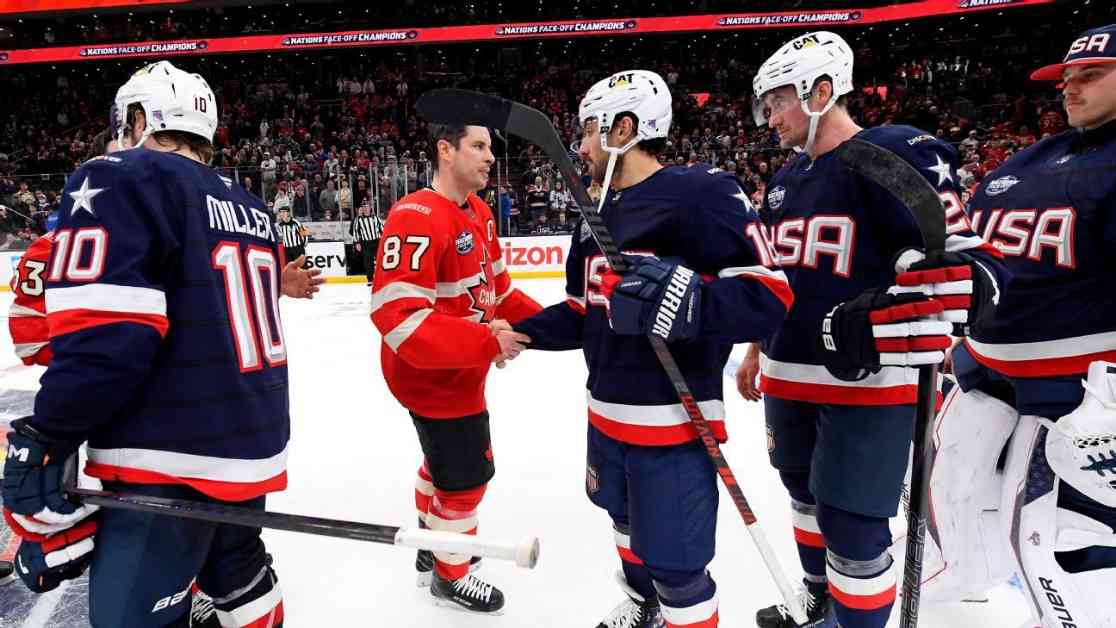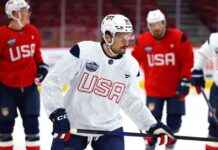4 Nations Face-Off: A Transformative Moment for the NHL
The 4 Nations Face-Off has become a game-changer for the NHL, marking a transformative moment for the league. What began as a midseason event to whet the appetite for the 2026 Winter Olympics has evolved into an electrifying showcase of the best-on-best hockey, filling the void left by the absence of such events since the 2016 World Cup of Hockey. As Team Canada coach Jon Cooper aptly put it, “Nothing’s done more for hockey in a decade than what this tournament’s done.”
The inaugural U.S. vs. Canada showdown in Montreal captivated fans with its intensity, producing three fights within the first nine seconds of the game, followed by a display of elite hockey between the arch rivals. The game garnered a massive audience, drawing in 9.3 million viewers and becoming the most-watched non-Olympic hockey game in the United States, injecting a level of excitement into the league that had been missing in recent memory. Suddenly, people who had never shown an interest in hockey were engaging in conversations about the sport.
“The game is in a better place because that game existed,” remarked Cooper, emphasizing the profound impact of the 4 Nations Face-Off on the landscape of hockey. The event not only captured the attention of die-hard fans but also resonated with casual viewers, sparking newfound interest and conversations around the sport.
A New Era for Midseason Events: What Lies Ahead for the NHL
Following the success of the 4 Nations Face-Off, the NHL is set to capitalize on the momentum generated by this transformative event. The All-Star Weekend, which took a hiatus to make way for the 4 Nations Face-Off, will return at the New York Islanders’ UBS Arena next February, serving as a prelude to the 2026 Winter Olympics in Italy. This marks the return of NHL players to the Olympic stage for the first time since 2014, signaling a new era of international best-on-best events.
NHL commissioner Gary Bettman and NHLPA executive director Marty Walsh have announced plans for a regular cadence of international tournaments, with the next World Cup of Hockey scheduled for 2028. The league envisions a future filled with a rotation of marquee events, including the 2030 Winter Olympics and potentially more World Cup tournaments in the years to come. The goal is to create a steady schedule of top-tier hockey competitions featuring the best players from around the globe.
While the future of the NHL All-Star Game beyond the upcoming season remains uncertain, sources indicate that the event will continue to hold a significant place in the league’s calendar. The All-Star Game, with its rich history and status as a cornerstone event, is likely to undergo changes in its format and timing to complement the international tournaments, offering fans a diverse array of hockey experiences throughout the season.
Balancing Tradition and Innovation: The Evolution of Hockey’s Marquee Events
As the NHL navigates the shifting landscape of midseason events, the spotlight shines on the All-Star Game and its unique role in the league. While the 4 Nations Face-Off has garnered widespread acclaim for its best-on-best format, the NBA All-Star Weekend has faced criticism from fans and players, highlighting the contrasting dynamics between the two leagues’ midseason showcases.
NHL players, including prominent figures like P.K. Subban and Josh Morrissey, have emphasized the significance of playing with passion and intensity, underscoring the cultural ethos of hockey that sets it apart from other sports. The emotional depth and national pride that come with representing one’s country on the ice add a layer of authenticity and excitement to international tournaments like the 4 Nations Face-Off, elevating the game to new heights.
Despite the allure of best-on-best competitions, the NHL All-Star Game offers distinct virtues that set it apart from its international counterparts. The event serves as a platform for showcasing individual talents and bringing together players from diverse backgrounds, bridging the gap between NHL markets and offering fans a chance to witness the world’s best players in action.
In conclusion, the 4 Nations Face-Off has redefined the narrative around best-on-best hockey, setting a new standard for the sport and igniting a fresh wave of enthusiasm among fans and players alike. As the NHL charts its course for the future, balancing tradition with innovation, the league is poised to embark on a journey of international competition that promises to captivate audiences and elevate the game to unprecedented levels of excitement and engagement.


















